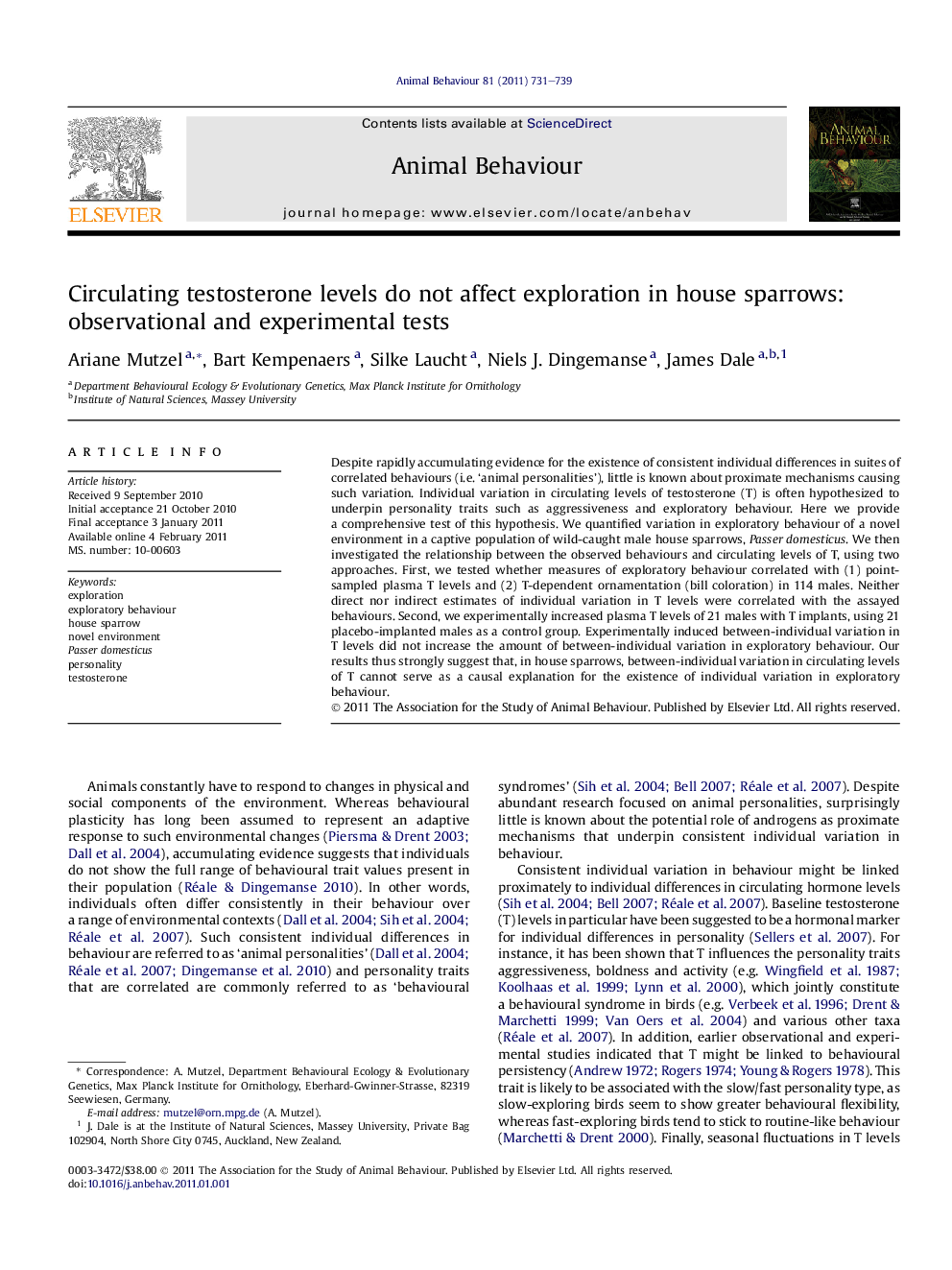| Article ID | Journal | Published Year | Pages | File Type |
|---|---|---|---|---|
| 2417080 | Animal Behaviour | 2011 | 9 Pages |
Despite rapidly accumulating evidence for the existence of consistent individual differences in suites of correlated behaviours (i.e. ‘animal personalities’), little is known about proximate mechanisms causing such variation. Individual variation in circulating levels of testosterone (T) is often hypothesized to underpin personality traits such as aggressiveness and exploratory behaviour. Here we provide a comprehensive test of this hypothesis. We quantified variation in exploratory behaviour of a novel environment in a captive population of wild-caught male house sparrows, Passer domesticus. We then investigated the relationship between the observed behaviours and circulating levels of T, using two approaches. First, we tested whether measures of exploratory behaviour correlated with (1) point-sampled plasma T levels and (2) T-dependent ornamentation (bill coloration) in 114 males. Neither direct nor indirect estimates of individual variation in T levels were correlated with the assayed behaviours. Second, we experimentally increased plasma T levels of 21 males with T implants, using 21 placebo-implanted males as a control group. Experimentally induced between-individual variation in T levels did not increase the amount of between-individual variation in exploratory behaviour. Our results thus strongly suggest that, in house sparrows, between-individual variation in circulating levels of T cannot serve as a causal explanation for the existence of individual variation in exploratory behaviour.
